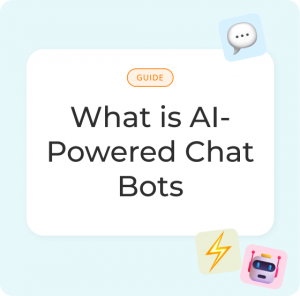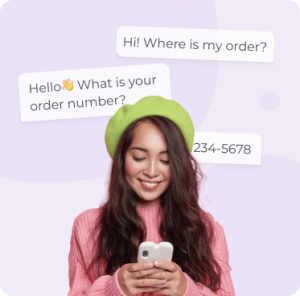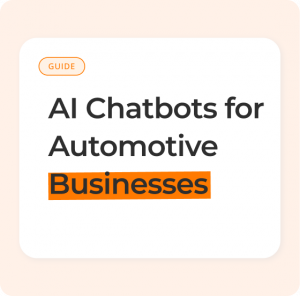Chatbot Best Practices for 2025: Strategies to Maximize Engagement and ROI
Why Chatbot Strategy Matters More Than Ever in 2025
In 2025, chatbots are no longer a novelty—they’re a necessity. Customers expect instant, 24/7 answers, and businesses can’t afford the cost of scaling human support alone. A well-designed chatbot can reduce support costs by up to 30% (IBM) while improving response times, engagement, and sales conversions. But the difference between a chatbot that frustrates users and one that drives measurable ROI comes down to following proven chatbot best practices in 2025.
This guide covers design principles, AI training methods, omnichannel strategies, personalization tactics, and ROI measurement—all the essentials you need to maximize chatbot performance this year.
Design & User Experience Best Practices
The foundation of a high-performing chatbot lies in its design and user experience (UX).
Conversational Flow Design
- Keep flows simple and intuitive. Avoid overwhelming users with too many options at once.
- Use guided prompts (buttons, quick replies) alongside free-text input to balance flexibility with clarity.
- Ensure every path has a clear outcome—whether it’s resolving the issue, escalating to a human, or collecting useful data.
Personality and Tone Guidelines
- Match the tone to your brand. A fintech bot should sound professional and trustworthy, while a retail bot can be friendly and upbeat.
- Use empathetic language—acknowledge frustration before offering solutions.
- Maintain consistency: your bot shouldn’t sound corporate in one message and casual in the next.
Mobile-First Approach
- Since over 70% of chatbot interactions happen on mobile, optimize for small screens.
- Use short, scannable messages (2–3 lines max).
- Test for load speed, button tap accuracy, and integrations with mobile messengers (WhatsApp, Telegram, Messenger).
AI Training & Optimization
A chatbot is only as good as the data it’s trained on. Continuous training and optimization ensure relevance and accuracy.
How to Train Your Chatbot Effectively
- Start with FAQ datasets and expand to more complex scenarios.
- Include both formal and informal phrasing—users rarely type in “perfect” grammar.
- Train the bot on multilingual data if you serve global customers.
Using Real Conversation Data
- Mine live chat transcripts and call center logs for high-frequency questions.
- Use customer sentiment data to refine tone and escalation triggers.
- Leverage feedback loops: ask users, “Did this answer help?”
Regular Updates and Improvements
- AI models must evolve. Schedule monthly reviews of unresolved queries.
- Add new intents as products, services, and policies change.
- Apply conversational AI optimization by re-testing different NLP models for accuracy.
Integration & Omnichannel Strategy
Customers expect seamless experiences across channels. Your chatbot should meet them wherever they are.
Multi-Channel Deployment
- Deploy on websites, WhatsApp, Messenger, Telegram, and email.
- Ensure uniform responses across platforms—no contradictions between web and mobile.
- Use analytics to see which channels drive the highest chatbot engagement strategies and prioritize those.
CRM Integration Best Practices
- Connect to CRM and helpdesk tools (HubSpot, Salesforce, Zendesk) so chatbots have context.
- Store chatbot conversations in customer profiles for 360-degree visibility.
- Enable personalized automation: e.g., when a VIP customer returns, the bot greets them by name and priority status.
Seamless Handoff to Human Agents
- Bots shouldn’t pretend to solve everything.
- Clearly signal when a human is stepping in: “I’m connecting you to an agent who can help further.”
- Transfer chat history so customers don’t need to repeat themselves.
Personalization Tactics
Generic responses are a quick way to lose engagement. Chatbot personalization strategies are critical in 2025.
Customer Segmentation
- Differentiate responses based on customer type (new visitor vs returning buyer).
- Create journey-specific flows: post-purchase support, lead nurturing, and onboarding.
Context-Aware Responses
- Use cookies, CRM data, and session history to understand context.
- Example: if a user abandoned their cart, the bot can follow up with a discount code.
Behavioral Triggers
- Trigger chatbot messages based on user behavior:
- Scrolling through pricing → offer comparison help.
- Spending 2+ minutes on checkout → send proactive support.
- Visiting FAQ page → suggest live chat escalation.
Measuring ROI
Without measurement, you can’t prove ROI—or improve performance.
Key Metrics to Track
- Containment rate (how many issues resolved without human help).
- First-response time and average resolution time.
- CSAT (Customer Satisfaction Score) after bot interactions.
- Conversion rate from chatbot-driven leads.
Benchmarking Performance
- Compare against industry benchmarks (e.g., Gartner reports average chatbot containment rate is ~70%).
- Benchmark internally over time—improvement is more important than chasing global averages.
A/B Testing Strategies
- Test different greetings (“How can I help?” vs “Looking for support?”).
- Experiment with CTA placement in the flow.
- Rotate tone variations—casual vs professional—and measure engagement.
FAQ: Chatbot Best Practices 2025
1. What are the top chatbot best practices for 2025?
Focus on intuitive design, AI training, omnichannel presence, personalization, and ROI measurement.
2. How do I increase chatbot engagement?
Use guided flows, proactive triggers, and personalized recommendations tailored to customer segments.
3. How do I measure AI chatbot ROI?
Track containment rates, conversion rates, CSAT scores, and cost savings from reduced agent workload.
4. What’s the role of personalization in chatbot strategy?
Personalization boosts engagement and satisfaction by using customer data, behaviors, and context to tailor responses.
5. How often should I update my chatbot?
Review at least monthly, updating FAQs, adding new intents, and retraining on real customer conversations.
6. Should chatbots always hand off to humans?
Yes, when issues exceed the bot’s scope. The best practice is seamless escalation with full chat history.
Conclusion – Oscar Chat Leads the Way
Chatbots in 2025 aren’t just about answering questions—they’re about delivering measurable business impact. By following these best practices in design, AI optimization, integration, personalization, and ROI tracking, businesses can achieve higher engagement and maximize return on investment.
At Oscar Chat, we follow all these principles:
- Our AI chatbot automates up to 90% of support questions.
- Omnichannel integration covers web, WhatsApp, Messenger, and email.
- Built-in CRM connections ensure seamless personalization.
- Real-time analytics track engagement, conversions, and customer satisfaction.
👉 Ready to apply chatbot best practices for 2025? Book a Demo with Oscar Chat and start maximizing engagement today.






